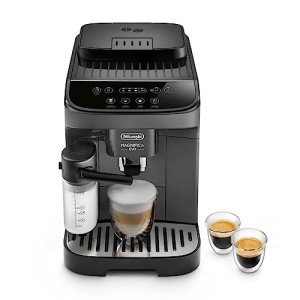Bean To Cup Espresso Coffee Machine: The Ultimate Guide
Over the last few years, the coffee culture has experienced a significant transformation, with the increase of home brewing devices supplying convenience and quality comparable to coffee shop offerings. Amongst these devices, the Bean to Cup Espresso Coffee Machine sticks out as a preferred amongst coffee lovers and casual drinkers alike. This extensive guide explores what these machines are, how they function, the benefits they offer, and aspects to consider when picking the best one.
What is a Bean to Cup Espresso Coffee Machine?
A Bean to Cup Espresso Coffee Machine is an advanced coffee developing gadget that grinds coffee beans fresh for each cup, automating the entire espresso-making process. These machines usually include built-in mills, incorporated milk frothers, and accurate brewing innovation, allowing users to develop top quality espressos, lattes, coffees, and more, all from the comfort of their homes. The convenience, combined with the rich and robust flavors produced, has made these machines progressively popular.
How Does It Work?
The fundamental operation of a Bean to Cup Espresso Coffee Machine can be broken down into several key actions:
Bean Grinding
- The machine grinds whole coffee beans right away before brewing, ensuring maximum freshness and taste retention.
Developing
- Ground coffee is loaded into a filter, and warm water is forced through the coffee grounds at high pressure, which is important for producing espresso.
Frothing (Optional)
- Many models include a steam wand or milk frother for preparing frothed milk for lattes and cappuccinos.
Serving
- The final phase includes giving the brewed coffee into a cup, typically with programmable functions for modification.
Advantages of Bean to Cup Espresso Machines
Buying a Bean to Cup Espresso Coffee Machine provides various advantages, adding to its growing appeal.
| Advantage | Description |
|---|---|
| Convenience | One-touch operation reduces the time and effort needed to prepare coffee. |
| Quality | Freshly ground beans lead to a richer, more tasty drink compared to pre-ground options. |
| Modification | Users can adjust settings to match individual choices, consisting of grind size, coffee strength, and milk froth levels. |
| Cost-efficient | Although the initial financial investment might be high, cost savings on coffee purchases from cafés can be considerable over time. |
| Adaptability | The ability to brew various coffee types, from espresso to cappuccino, widens the machine's appeal. |
Key Features to Look For
When picking a Bean to Cup Espresso Coffee Machine, various functions can influence the purchase decision. Below are necessary elements to consider:
Grinder Type
- Burr mills are preferred over blade mills for their constant grind size.
Developing Pressure
- Search for machines that offer at least 15 bars of pressure for optimal espresso extraction.
Milk Frother
- Pick in between manual steam wands or automatic milk frothers based on preferences for milk texture and foam.
User Interface
- An user-friendly control board with programmable settings enhances the total experience.
Size and Design
- Consider the countertop area offered and select a design that complements your kitchen looks.
Maintenance Options
- Some machines provide automatic cleaning cycles, which can save time and effort in upkeep.
Popular Bean to Cup Espresso Machines
Choosing a machine that fits one's requirements can be difficult. Below is a list of popular models, known for their reliability and efficiency.
| Design | Secret Features | Rate Range |
|---|---|---|
| De'Longhi Magnifica ESAM3300 | Adjustable coffee strength, compact style | ₤ 550 - ₤ 700 |
| Breville Barista Touch | Touchscreen controls, integrated conical burr grinder | ₤ 800 - ₤ 1,150 |
| Saeco PicoBaristo | Automatic milk frother, 12 coffee specializeds | ₤ 900 - ₤ 1,300 |
| Jura E8 | Pulse Extraction Process, Alexa Compatible | ₤ 1,800 - ₤ 2,500 |
| Gaggia Anima | Easy to clean, programmable settings | ₤ 500 - ₤ 800 |
Maintenance Tips
Keeping a Bean to Cup Espresso Coffee Machine in great condition is necessary for making sure longevity and optimum performance. Here are some upkeep suggestions:
- Regular Cleaning: Clean the machine's parts frequently, including the drip tray, coffee grounds container, and water reservoir.
- Descaling: Perform descaling every few months based upon water hardness and use to prevent mineral accumulation.
- Modification Water Filter: If the machine has a water filtration system, alter the filter as advised.
- Check Seals and Gaskets: Check for wear and tear to avoid leakages and guarantee proper pressure throughout developing.
FAQs
1. Are Bean to Cup Espresso Machines simple to use?Yes, a lot of designs are created for user convenience with easy control panels and one-touch operation. 2. Can I utilize pre-ground coffee in these machines?While some machines permit making use of pre-ground coffee, the primary benefit depends on using whole beans for fresh grinding. 3. How often must I clean my Bean to Cup machine?Regular maintenance is essential; daily cleansing of detachable parts and descaling every 2-3 months are generally suggested. 4. What is the average
life expectancy of a Bean to Cup Espresso Coffee Machine?With correct maintenance, these machines can last anywhere from 5 to 15 years based on usage quality
. 5. Are these machines worth the investment?Though they can be pricey, the benefit, quality coffee production, and long-lasting cost savings make them a worthwhile financial investment for many coffee enthusiasts. Investing in a Bean to Cup
Espresso Coffee Machine can substantially improve the home
coffee experience. By offering freshly brewed, high-quality coffee, these machines deal with the growing demand for café-style drinks in the convenience of one's cooking area. With Best Bean To Cup Machines on the marketplace, comprehending features and individual choices will assist in selecting the best machine to fit any coffee lover's needs.

